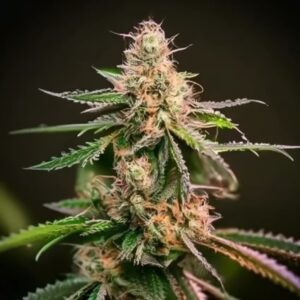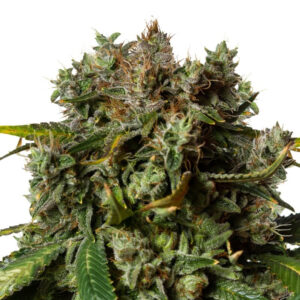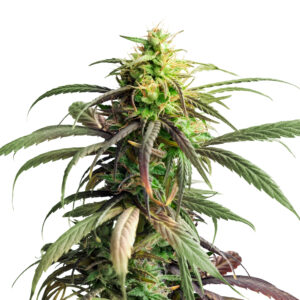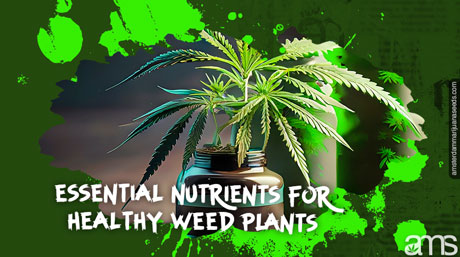When it comes to cultivating marijuana, many factors contribute to the overall success and quality of the plants. One often overlooked but crucial element is water quality. Just like any other crop, marijuana plants require adequate hydration to thrive, but the quality of the water used can have a significant impact on their growth, yield, and overall health. Let’s delve into the importance of good water quality when cultivating marijuana and understand how it can make a difference in the final product.
In the realm of marijuana cultivation, the importance of good water quality cannot be understated when it comes to nutrient absorption. Just like any other plant, marijuana relies on water to absorb essential nutrients from the soil and distribute them throughout its system. However, the quality of the water utilized can significantly impact this process and, consequently, the growth, yield, and overall health of the plants.

Water contaminated with heavy metals, such as lead, cadmium, or mercury, can prove detrimental to the nutrient uptake process. When marijuana plants absorb water containing these toxic elements, they can accumulate within the plant tissues, leading to potential health risks for consumers. Heavy metals are persistent and can remain in the plant long after cultivation, posing long-term health hazards. Moreover, these contaminants can alter the chemical composition of the plant, affecting its taste, smell, and medicinal properties.
Chemicals present in the water also pose risks to nutrient absorption. Pesticides, herbicides, and other agricultural chemicals can leach into water sources and subsequently be taken up by marijuana plants. These chemicals can disrupt the plants’ natural growth processes, interfere with nutrient absorption mechanisms, and introduce harmful substances into the final product. The presence of chemical residues in marijuana can compromise its quality and safety, making water quality crucial for producing clean and uncontaminated crops.
Furthermore, high mineral content in water, specifically excessive salts or calcium levels, can cause a nutrient lockout. These minerals can accumulate in the soil over time, either through the water source or as a result of excessive fertilizer application. As the plants absorb water containing high mineral concentrations, the delicate nutrient balance in the root zone is disrupted. Consequently, this imbalance inhibits the plant’s ability to absorb essential nutrients, leading to nutrient deficiencies and hampered growth.
To ensure good water quality for marijuana cultivation, growers must consider utilizing filtered water or employing water treatment systems. Techniques such as reverse osmosis or activated carbon filters can effectively remove impurities, heavy metals, and chemicals, thus providing clean water for plants. Regular water testing is also crucial to identify any potential contaminants, allowing growers to take appropriate measures to improve water quality and safeguard the health and vitality of their marijuana plants.
Disease prevention stands as a vital aspect of marijuana cultivation, and water quality plays a pivotal role in this regard. Contaminated water can introduce harmful pathogens, bacteria, and fungi to plants, leading to a range of diseases that can severely impact their growth and overall well-being.
Root rot is one of the most notorious diseases affecting marijuana plants, and it is primarily caused by various species of fungi. This fungal infection thrives in waterlogged conditions and can rapidly spread throughout the root system, depriving plants of essential nutrients and water. The disease often manifests through symptoms such as wilting, yellowing leaves, and stunted growth. If left untreated, root rot can result in plant death and significant crop losses.
Apart from root rot, waterborne pathogens can also lead to foliar diseases such as powdery mildew. Powdery mildew is a common fungal infection characterized by the development of white, powdery growth on the leaves, stems, and buds. This infection can impair photosynthesis, reduce plant vigor, and negatively affect the quality and yield of the final product.
Implementing proper water sterilization and treatment methods is imperative to prevent disease outbreaks. Techniques like UV sterilization or ozonation can effectively eliminate harmful microorganisms from water, ensuring a clean and pathogen-free water supply for the plants. Additionally, maintaining proper irrigation practices, such as avoiding overwatering and ensuring adequate drainage, can help prevent waterborne diseases by minimizing excess moisture around the roots.
Furthermore, it is essential to consider the source of the water used in cultivation. Using untreated water from rivers, ponds, or wells without adequate filtration or treatment increases the risk of introducing pathogens and contaminants to the plants. Employing appropriate water management practices, such as sourcing water from reliable and tested sources, can significantly reduce the chances of disease occurrence.
By prioritizing disease prevention through good water quality, cultivators can minimize their reliance on chemical treatments or pesticides, promoting a more sustainable and environmentally friendly cultivation process. It also contributes to the overall health and vitality of the plants, allowing them to reach their full potential and produce high-quality yields.
Maintaining proper pH balance in marijuana cultivation is essential for optimal nutrient availability and uptake. The pH of the water directly affects the pH of the soil, influencing the chemical reactions that determine nutrient solubility. If the water used for irrigation has a high pH (alkaline), it can raise the pH of the soil, making it more difficult for certain nutrients to dissolve and become available to the plants. On the other hand, if the water has a low pH (acidic), it can acidify the soil, potentially leading to nutrient imbalances or toxicities.
Different nutrients have different pH ranges at which they are most readily available to plants. For example, iron is most accessible to plants in slightly acidic conditions, while calcium and magnesium are more available in neutral to slightly alkaline pH ranges. When the pH of the soil deviates too much from the optimal range for a specific nutrient, it can hinder its uptake, resulting in deficiencies or toxicities.
Regularly testing the pH of the water and adjusting it before irrigation allows cultivators to maintain the desired pH range in the soil. This can be achieved by using pH adjusters or acidifying agents to lower pH or alkaline substances to raise pH, depending on the specific needs of the plants. By carefully managing pH levels, cultivators create an environment that maximizes nutrient availability, facilitating healthy growth, and development of marijuana plants.
Water quality plays a significant role in determining the flavor and aroma of marijuana plants. Substances present in water, such as chlorine, can react with organic compounds within the plant, altering its natural terpene profile. Terpenes are organic compounds responsible for the vast array of flavors and aromas found in different marijuana strains. They contribute to the unique scent and taste of each variety, ranging from fruity and citrusy to earthy or piney.
Using clean, filtered water ensures that the plants are not exposed to chlorine or other chemicals that can interfere with terpene expression. Chlorine, commonly used as a disinfectant in tap water, can react with terpenes and create off-flavors or diminish their intensity. By eliminating these contaminants from the water source, cultivators can preserve the natural essence of the plants and maintain the full range of terpenes, resulting in a more pronounced and authentic flavor profile in the final product.
The purity of the water also ensures that there are no mineral deposits or residues left on the plant surfaces. These residues can affect the sensory experience by introducing unwanted flavors or altering the overall balance of terpenes. By using high-quality water, cultivators can enhance the flavor and aroma of their marijuana strains, offering consumers a more enjoyable and authentic experience.
Considering water quality in marijuana cultivation practices has positive environmental implications. Contaminated water runoff from cultivation sites can have detrimental effects on local ecosystems and water sources. Pesticides, fertilizers, and other chemicals used in cultivation can leach into water bodies, polluting aquatic environments and harming aquatic life. In addition, excessive nutrient runoff can lead to eutrophication, causing algae blooms and disrupting the balance of aquatic ecosystems.
By implementing sustainable water management techniques and prioritizing water quality, cultivators can minimize their environmental impact. Recycling and reusing water can reduce the overall demand for freshwater resources, lessening the strain on local water supplies, particularly in regions experiencing water scarcity. Collecting and treating runoff water for reuse can contribute to water conservation and minimize the need for excessive irrigation.
Implementing proper filtration and treatment methods ensures that water leaving cultivation sites is free from contaminants and pollutants. This helps protect local water sources, preventing the introduction of harmful substances into natural ecosystems and safeguarding the health of aquatic organisms. Responsible water management practices also involve adopting erosion control measures, such as the use of cover crops or mulching, to minimize soil erosion and the loss of sediments into water bodies.
By integrating these sustainable practices, marijuana cultivators can contribute to the preservation of water resources, mitigate environmental pollution, and promote a more ecologically balanced approach to cultivation.
Water quality is vital in marijuana cultivation because it directly affects nutrient absorption, pH balance, disease prevention, flavor and aroma, and the environmental impact of the cultivation process. Good water quality ensures that plants can effectively absorb nutrients, maintain optimal pH levels, prevent the introduction of harmful pathogens, preserve the natural flavors and aromas of the plants, and minimize environmental pollution.
Contaminants of concern in water for marijuana cultivation include heavy metals (such as lead, cadmium, and mercury), chemicals (like pesticides or herbicides), chlorine, and excessive mineral content. These contaminants can negatively impact plant health, compromise the quality and safety of the final product, and contribute to environmental pollution.
To improve water quality, consider using filtered water or employing water treatment systems such as reverse osmosis or activated carbon filters. Regular water testing can help identify contaminants and allow for appropriate measures to be taken. Additionally, adopting sustainable water management practices, such as recycling and reusing water and minimizing runoff, can further enhance water quality and conservation efforts.
pH balance is critical in marijuana cultivation as it affects nutrient availability. Monitoring and adjusting the pH of the water before irrigation helps maintain the desired pH range in the soil, ensuring optimal nutrient uptake. This is important because different nutrients are most accessible to plants within specific pH ranges. Proper pH balance promotes healthy plant growth and development.
Yes, water quality can influence the flavor and aroma of marijuana. Contaminated water, such as water with chlorine or high mineral content, can leave residues or alter the natural terpene profile of the plants. Terpenes are responsible for the distinctive flavors and aromas of different strains, and using clean, filtered water helps preserve their authenticity, resulting in a more pronounced and enjoyable sensory experience.
Water quality has environmental implications in marijuana cultivation. Contaminated water runoff can harm local ecosystems, pollute water sources, and disrupt the balance of aquatic environments. By prioritizing water quality, implementing sustainable water management practices, and minimizing the use of chemicals, cultivators can reduce their environmental footprint, conserve water resources, and protect the health of surrounding ecosystems.













Related Posts

As a grow shop – garden center owner from Amsterdam and a passionate cannabis cultivator, I understand the importance of providing the right nutrients to your weed plants at different stages of growth. Proper nutrition is crucial for healthy and thriving cannabis plants, ultimately leading to higher yields and potent buds. In this guide, we will explore the essential nutrients…

In this article you will find answers to following questions: How does temperature affect cannabis plants?, What are the effects of light stress on marijuana cultivation?, Why is it essential to control humidity for cannabis plant health?